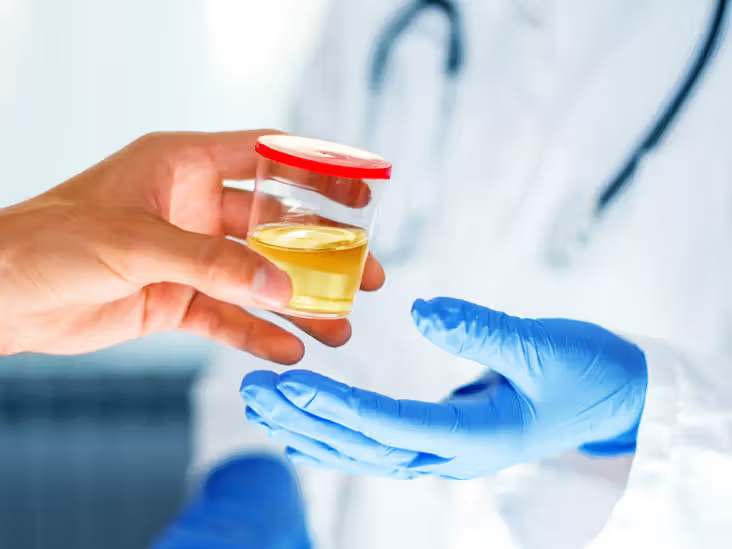10 most common antibiotics for UTIs

In this article we will describe 10 commonly used antibiotics for UTIs, including their indications, doses, and potential side effects.
Antifolate antibiotic
1. Trimethoprim (first line agent)
- Indication: Uncomplicated lower UTIs
- Dose: 200mg twice daily for 3 days
- Side effects: Gastrointestinal upset, rash, bone marrow suppression.
Note. Co-trimoxazole (Septrin; a commbination of Trimethoprim and Sulfamethoxazole) is also used. The dose is 960mg twice daily.
Nitrofuran antibiotic
2. Nitrofurantoin (first line agent)
- Indication: Uncomplicated lower UTIs, especially in pregnancy; can be used for prophylaxis in recurrent UTIs
- Dose: 100mg twice daily for 7 days (modified release)
- Side effects: Gastrointestinal upset; liver dysfunction, pulmonary fibrosis (with long-term use)
Penicillins
3. Amoxicillin
- Indication: Uncomplicated UTIs (especially in pregnancy or breastfeeding)
- Dose: 500mg three times daily for 7 days
- Side effects: Gastrointestinal upset, rash.
Note 1: high rate of resistance, so only use if culture susceptible
Note 2. Co-amoxiclav (Augmentin; a combination of Amoxicillin and Clavulanic acid) is also used. The dose is 625mg three times a day.
4. Pivmecillinam (specialist only)
- Indication: Uncomplicated lower UTIs
- Dose: 400mg initial dose, then 200mg three times daily for 2-3 days
- Side effects: Gastrointestinal upset.
Cephalosporins
5. Cefalexin
- Indication: Complicated UTIs or resistance to other antibiotics
- Dose: 500mg three times daily for 7 days
- Side effects: Gastrointestinal upset, rash.
6. Ceftriaxone (hospital use)
- Indication: Severe UTIs, pyelonephritis, or complicated infections
- Dose: IV, dose variable and adjusted according to severity and renal function
- Side effects: Gastrointestinal upset, C. difficile risk.
Quinolones
7. Ciprofloxacin (specialist only)
- Indication: Complicated UTIs, pyelonephritis, or resistant organisms
- Dose: 250-500mg twice daily for 7-10 days
- Side effects: Gastrointestinal upset, tendon damage, C. difficile risk.
8. Levofloxacin (specialist only)
- Indication: Complicated UTIs or pyelonephritis, especially in cases of resistance
- Dose: 500mg once daily for 7-10 days
- Side effects: Gastrointestinal upset, tendon damage, C. difficile risk.
Phosphonic acid antibacterial
9. Fosfomycin (specialist only)
- Indication: Uncomplicated UTIs, especially for ESBL-producing organisms
- Dose: 3g single dose
- Side effects: Gastrointestinal upset.
Aminoglycoside
10. Gentamicin (hospital use)
- Indication: Severe UTIs or sepsis, often in hospital settings
- Dose: IV, variable dose (adjusted according to weight and renal function)
- Side effects: Ototoxicity, nephrotoxicity.
Note. Amikacin is another aminoglycoside that can bne used for UTIs.
Other antibiotics for UTIs
These include doxyxcline.
Typical treatment lengths
- Single dose: Fosfomycin
- 3 days: Trimethoprim (or Septrin)
- 5-7 days: Nitrofurantoin, fluoroquinolones, penicillins
- 7-14 days: Various antibiotics for complicated UTIs or pyelonephritis.
Use of antibiotics in UTIs
Note. When prescribing antibiotics for UTIs, consider the following:
- Local resistance patterns and guidelines (e.g. local trust guidelines)
- Patient factors: pregnancy, breastfeeding, renal function, allergies
- Microbiological results and adjust treatment accordingly
- Potential side effects and interactions with other medications.
Complicated vs Uncomplicated UTI
- Which medication and dose you get also depends on whether your infection is complicated or uncomplicated:
- Uncomplicated means your urinary tract is normal and you are otherwise healthy. This makes a UTI easier to treat
- Complicated means there is another condition that makes your UTI harder to treat.
Always consult with a senior doctor or microbiologist if unsure about antibiotic choice or treatment duration. Regular review and adjustment of treatment based on clinical response and microbiological results are essential for effective UTI management.
Summary
We have described 10 commonly used antibiotics for UTIs, including their indications, doses, and potential side effects. We hope it has been helpful.

